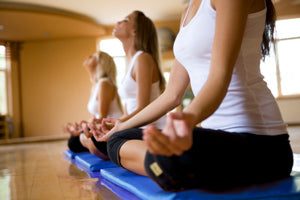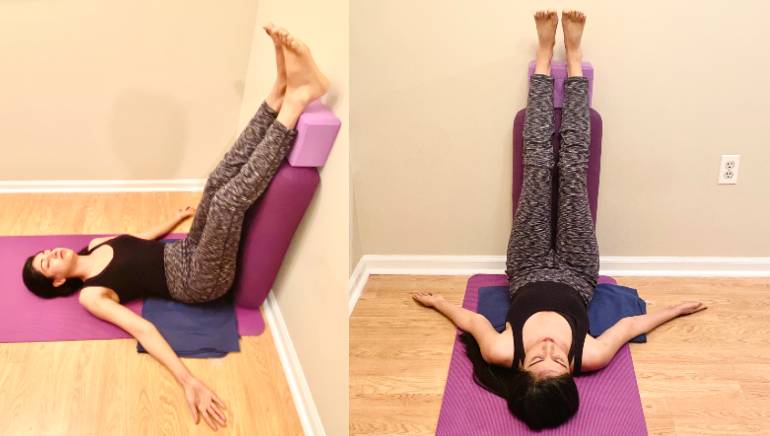
The Yamas, a set of rules and principles that are part of Yoga philosophy, are the Yamas. They are moral directives, commandments, or rules. They can be found in both the Vedas, Yoga Sutras, and other sources. These rules will help you to have a greater spiritual awareness and lead a happier and more balanced life. Yamas can be translated as "to rein in" and "to control."
Self-control
The yamas (behaviors), which are seven fundamental values in yoga, are a collection of seven. They all relate to the principle that self-control and non-possessiveness. The ultimate purpose for the yamas is restraint of evil and desire in the mind and bodies.
Brahmacharya is the first yama. It refers to using your sexual energy wisely and conserving it. However, brahmacharya does not mean a person must be celibate; it merely means to channel the energy of sexual desire into higher brain centers. Aparigraha, another yama encourages the non-possession and nonattachment of people and things.

The second limb of the yamas is samyama (non-violence), which focuses on non-harming. It is important that you remember that ahimsa must be a prerequisite to all other yamas, including samadhi. Ahimsa is defined in the Vyasa to mean "not causing injury to living beings". This includes physical, mental, and spiritual violence, including avoiding unnecessary disturbance.
Self-purification
The yamas refer to a set Buddhist principles that can be used in daily life. These principles emphasize the principle of not lying, gossiping, and projecting negative stories. You should not lie to yourself or others about who you are or what you want. It's not a good idea take advantage of other people.
The Yamas are a collection of moral, ethical and spiritual guidelines. Each principle is specific to a particular aspect of a person's daily life. These principles include self-discipline and purification as well as devotion to the Lord Yoga. These guidelines are meant to help people live happier, more contented lives.
You should reflect on your progress during Yamas practice. During this time, you may experience epiphanies or gain powerful insights. Reflecting on your experiences will help you integrate the Yamas into your daily life. Even if you feel like you are making progress, there might be something that is holding you back.

Self-purification can be a constant process. This doesn't just involve bathing and showering. It also includes the mind, thoughts, and actions. For happiness and contentment, self-purification is crucial.
FAQ
Does yoga make me look like a hunk?
No! After practicing yoga, you will not appear like a Hollywood star. Yoga will make you look stronger, leaner and more flexible.
Is 20 minutes a day of yoga enough?
Yoga should not just be exercise. It is an opportunity to reflect on your life, and how it has been lived.
My friend introduced me to yoga a few years back. He had been practicing it for many decades. He shared with me that he did twenty minutes of yoga every morning to help him feel calmer through the rest his day.
I tried it and noticed a significant improvement in my overall wellbeing. I have continued to do yoga since that time and found it helpful in helping me relax and keep my focus while working at the desk.
It is important to find what works best for your needs and set realistic goals. If you don't feel the benefits of yoga, you don't have to do it all day.
Are you able to do yoga with your hands?
It all depends upon the type of yoga. Some styles demand flexibility, while others require strength and flexibility.
Also, different levels of flexibility are required depending on the style of yoga. For example, beginners might just need to raise their arms above the head. Whereas intermediate practitioners may need to bend forward and touch their toes. Advanced practitioners may need to perform deep twists and bends.
What type of yoga is best for beginners?
Yoga is great for all fitness levels and ages. It's a great way for people to stay healthy and fit. Yoga has been reported to improve mental and physical health. They also report feeling calmer and happier after practicing yoga.
Yoga is not just exercise but a lifestyle that includes breathing exercises, stretching, and meditation.
There are many kinds of yoga. There are many types of yoga. Some focus on strength training while others emphasize relaxation.
The type you choose will depend on your expectations of yoga. Iyengar yoga can help you increase your flexibility. Or if you want to tone your muscles, go for Ashtanga yoga.
What are the benefits to yoga for beginners?
Yoga can improve your posture and flexibility as well as strength, flexibility, breathing control, relaxation, mental clarity, breath control, and muscle strength. Yoga helps you to be more aware yourself, others, the world, and everything around you.
Yoga can help you live life fully. You learn to listen to your body and mind. You learn to accept yourself as you are. It is possible to let go tension and stress.
You learn to relax, enjoy and appreciate life.
What are the side effects of yoga?
Yoga, like all types of exercise, has its own risks. The most serious risk is injury. Be sure to learn how to do each pose safely.
Yoga can make you dizzy or faint if your first time doing it.
This is caused due to blood clotting in your brain. But don't worry; the sensation disappears quickly.
Do not hold your breath if you feel chest pains while performing downward-facing dogs. You will only increase the heart rate and make matters worse.
After I do yoga, will my clothes still fit?
Most likely, yes. The majority of yoga pants have elastic waists and can be worn as a stretchy garment. They should also be comfortable enough to wear during your workout without feeling constricting.
Yoga pants may not fit well if your weight has dropped recently. Consider wearing leggings, or shorts, instead.
Statistics
- A 2020 review of 27 studies (1,805 total participants) of yoga interventions in children or adolescents found reductions in anxiety or depression in 70 percent of the studies, with more promising results for anxiety. (nccih.nih.gov)
- In comparison, a 125-pound person is estimated to burn 135 calories in 30 minutes of walking (at a pace of 15-minute miles) and 210 calories bicycling at a moderate pace on a stationary bike. (everydayhealth.com)
- The people in the yoga group were 37 percent more likely to have quit smoking by the end of the 8-week program. (nccih.nih.gov)
- The American Psychological Association recently shared that 84% of American adults feel the impact of prolonged stress (5). (healthline.com)
- Lock in 25% off your Founding Member rate. (corepoweryoga.com)
External Links
How To
Can I do yoga during pregnancy?
Being pregnant can impact your ability to perform certain poses safely. Before you start a new exercise program, consult your doctor.
There are still many poses that you can do during pregnancy. Here are some tips:
-
Women who are pregnant shouldn't lift more than shoulder height. Instead, try dumbbells and resistance bands made of lightweight materials.
-
Avoid deep twists. They could cause pressure to your stomach.
-
Try to avoid backbends until you give birth. These can cause excessive strain on your lower back.
-
Before you deliver your baby, make sure to not sit on your stomach or cross-legged until the delivery.
-
You should not attempt to invert poses such as handstands or headstands without your doctor's approval.
-
Keep your practice time to no more than 30 minutes per day
When you're ready, you can continue doing yoga throughout your pregnancy. Your doctor will advise you on when you are ready to practice yoga.